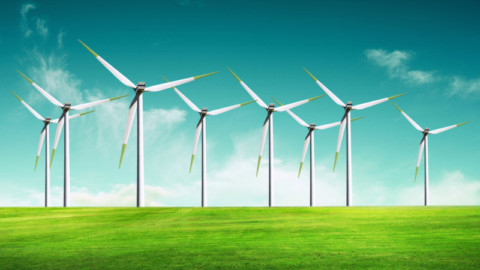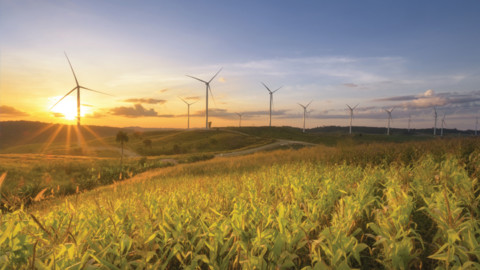By Shahana McKenzie, CEO, Bioenergy Australia
It is well recognised that aviation is one of the most challenging industries to decarbonise. With Australia’s geography requiring longer flights and larger planes for critical connectivity, sustainable aviation fuel must be prioritised in our efforts to reach net zero by 2050. Here, Bioenergy Australia CEO, Shahana McKenzie, outlines the benefits Australia – and the world – could see by adopting more ambitious targets in the aviation industry.
While renewable hydrogen and electrification could contribute to the decarbonisation of aviation, these solutions are in early development. In contrast, sustainable aviation fuel (SAF) is available today to play a critical role in achieving the aviation sector’s 2050 emission reduction targets.
The International Air Transport Association (IATA) estimates that 65 per cent of required emission reductions to achieve its target of net zero aviation by 2050 need to be delivered through the use of SAF.
SAF is non-conventionally derived aviation fuel that can be made from sustainable biogenic sources, such as used cooking oils, council waste, plant oils, agricultural residues and non-biological sources. Biogenic SAF has the potential to reduce emissions on a lifecycle basis, typically by up to 80 per cent compared to conventional jet fuel.
In addition to the reduction of total life cycle CO2 emissions, SAF reduces direct emissions: particulate matter by up to 90 per cent and sulphur by 100 per cent, compared to conventional jet fuel. Reducing these emissions improves local air quality, particularly in areas with a high density of flight movements, such as airports.
The decarbonisation of aviation is a global challenge. As such, production and supply is also global. The key challenge delaying the wider adoption of SAF is the cost, sitting around three to five times the price of conventional jet fuel. Regulators around the world are rising to the challenge of driving expanding SAF adoption through mandates and incentives.
In Europe, Sweden, Norway and France have already established SAF mandates requiring a certain share of all jet fuel used to be SAF.
The European Union and the United Kingdom are expected to make such policies Europe-wide by 2025. In the US, the government has set the target to increase SAF use to 3 billion gallons by 2030 with support of financial incentives. Collaboration between industry and government to develop a supportive investment and policy environment would enable an Australian SAF industry to:
- Supply up to 18 per cent of Australia’s domestic aviation fuel market by 2030
- Create more than 7,400 jobs by 2030, and up to 15,600 jobs by 2050 – most in regional areas
- Secure Australia’s domestic fuel security – removing reliance on imported liquid aviation fuel
- Unlock a large export market – Australia represents a small percentage of the global aviation fuel market, so there would be significant opportunities to scale up domestic production to export SAF to other countries
- Contribute an additional $2.8 billion in GDP per year by 2030, and up to $7.6 billion per year in 2050
SAF is already in use globally, with the number of commercial flights using SAF already exceeding 450,000. In addition, SAF operates within existing infrastructure, refuelling systems and aircraft without modification, as such SAF is ready for immediate decarbonisation of aviation in Australia.
In December 2021, Qantas became the first Australian airline to purchase SAF on an ongoing basis, which is being delivered at London Heathrow Airport. Since then, Qantas has acquired 3.2 million litres of SAF at London Heathrow for FY22, representing approximately 7,200 tonnes of abated CO2 equivalent.
The SAF will represent (by volume) up to 15 per cent of their annual fuel needs out of Heathrow Airport, reducing carbon emissions by up to ten per cent on this route, based on 2019 volumes from London Heathrow. In addition, Qantas Group announced an interim target in
March 2022, which included ten per cent use of SAF in Qantas’ fuel mix by 2030 and approximately 60 per cent by 2050. Bioenergy Australia formed the Sustainable Aviation Fuel Alliance of Australia and New Zealand (SAFAANZ) to focus on the decarbonisation of the hard-to-abate aviation industry using sustainable aviation fuel.
The SAFAANZ includes over 60 organisations ranging from airlines, airports, aviation industry suppliers, aviation fuel producers and distributors, research organisations, and non-profit/industry associations. The ambition of the alliance is to create a collaborative environment to advance sustainable aviation fuel production, policy, education and marketing in Australia and New Zealand.
This collaboration is critical to achieving the modelling presented in Australia’s Bioenergy Roadmap (2021), which shows that industry and government efforts could result in SAF representing approximately 18 per cent of the aviation fuel market by the 2030s.
The SAFAANZ welcomes the announcement by the Commonwealth Government recently for the formation of a Jet Council. This follows the lead of the UK, Canada and New Zealand and their Jet Zero Councils or equivalent. A Jet Council to connect state and federal governments with aviation industry stakeholders to guide the development of sustainable aviation policies is essential in progressing the industry.
The Jet Council will work with various levels of government to guide and support pathways for SAF R&D in Australia, as well as provide feedback on the design and implementation of policies to overcome existing barriers to SAF development.

















